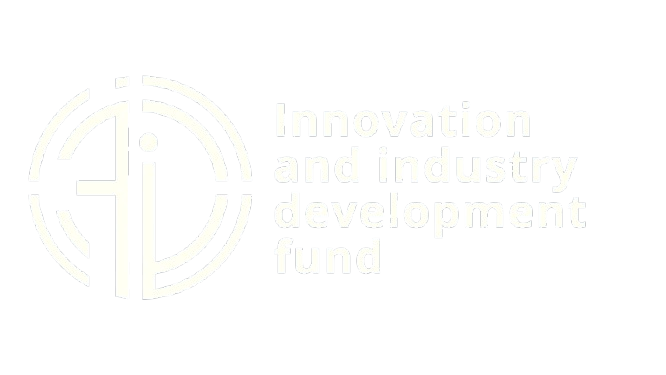
Continuation: Assessing the Potential and Need for Automation in Government Organizations
Author: Shirin Atlasova | Project Manager, IDF
shirin.atlasova@idf.tj
In the two previous articles, we discussed the main topics, including an introduction to the automation of the public sector and how to assess the potential for automation. After identifying potential areas for automation within the government, we must strategically prioritize initiatives to ensure maximum impact and efficient resource allocation.
A comprehensive Cost-Benefit Analysis (CBA) is fundamental before starting any automation project. This approach helps determine whether a project’s benefits outweigh its projected costs.
- Clearly state the project’s purpose, goals, timelines, required resources, and constraints.
- Account for direct costs, indirect costs, fixed/variable costs, opportunity costs, and future costs. When it comes to benefits, include tangible outcomes and intangible benefits.
- Convert costs and benefits into monetary terms whenever possible. Use actual data or estimation methods, such as shadow pricing, for intangible items.
A CBA ratio greater than 1 indicates economic viability. In the context of the U.S. federal government, CBA is often required for regulations with significant economic impacts (e.g., $200 million or more), with the Office of Management and Budget (OMB) Circular A-4 providing guidance on measurement and reporting.
While financial savings (tangible) are a primary motivator, automation in the public sector brings many intangible benefits that are harder to quantify but equally important.
Tangible Benefits
- Reduced operational costs
- Faster processing times
- Increased accuracy
- Increased revenue (e.g., through more efficient tax collection)
For example, e-procurement can cut transaction costs by 65% and procurement transaction costs by up to 42%.
Intangible Benefits
- Improved citizen satisfaction and experience
- Increased transparency and accountability
- Better regulatory compliance
- Improved employee morale and a focus on more valuable work
- Reduced risk of human error
- Stimulated innovation
Use surveys to measure satisfaction, track engagement data, or apply indirect metrics. While challenging, measuring intangible benefits is crucial for decision-making and demonstrating value.
The recurring mention of “citizen satisfaction,” “transparency,” “social impact,” and “public trust” in various sources as key benefits for the government highlights the unique need to quantify intangible benefits in the public sector. Unlike the private sector, where ROI is often purely financial, the “return on investment” in the public sector is heavily influenced by non-monetary, social, and ethical outcomes. The emphasis on “equity, accessibility, and long-term social impact” means that traditional financial CBA is insufficient. Governments must develop robust methodologies (e.g., social impact assessment) to quantify these intangible benefits, even if through proxies or qualitative assessments, to truly justify and prioritize automation projects. This ensures that automation aligns with the core mission of public service, not just cost reduction.
To objectively rank automation projects, agencies can use prioritization matrices. These matrices evaluate projects based on predefined criteria, promoting objective decision-making and aligning team efforts.
Common Prioritization Criteria:
- Strategic Alignment: The project aligns with the organization’s goals and mission.
- Potential ROI/Financial Impact: Cost savings, revenue generation.
- Citizen/Customer Impact: Improved service, satisfaction, accessibility.
- Implementation Complexity/Feasibility: Resource availability, technical feasibility, integration capabilities, risk assessment.
- Risk Level: Potential negative consequences.
- Process Improvement Potential: Increased efficiency, quality impact, waste reduction.
- Regulatory Compliance/Social Responsibility: Adherence to laws, ethical considerations.
- Time-to-Market/Delivery: Speed of implementation.
Table 1: Prioritization Criteria for Public Sector Automation Projects
| Criteria Category | Specific Criterion | Estimated Weight (%) | Description |
| Strategic Alignment | Alignment with Mission/Goals | 20% | How well the project aligns with the overall strategic goals and mandate of the public agency. |
| Financial Impact | Potential ROI/Cost Savings | 25% | Expected reduction in operational costs, revenue increase, or overall financial benefit from the project. |
| Citizen/Societal Impact | Improved Citizen Experience, Social Impact | 30% | How the project will improve the accessibility, quality, and convenience of services for citizens, as well as its broader social benefits. |
| Operational Feasibility | Implementation Complexity, Data Readiness | 15% | Availability of necessary resources (human, technical), technical feasibility, ease of integration with existing systems, and data quality. |
| Risk and Compliance | Ethical Considerations, Regulatory Compliance | 10% | Potential risks (e.g., algorithmic bias, data breaches), as well as compliance with laws, ethical norms, and transparency standards. |
Matching Technology to Needs: The Spectrum of Automation Tools
The choice of automation technology should be tailored to the identified inefficiencies and desired outcomes.
RPA uses software robots to mimic human actions in digital systems, automating repetitive, rule-based tasks. It is currently ideal for data entry, file movement, information extraction, and updating records across multiple systems.
Common Use Cases in Government: Processing license applications, onboarding new employees, reconciling financial data, and responding to common citizen inquiries. Specific examples include automating application processing (data extraction, validation, routing), managing compliance checks and generating audit reports, improving tax calculations and refund processing, and optimizing HR/payroll (recruitment, calculations, deductions).
Digital Platforms for Integrated Government Services and Registries serve as the foundation for delivering integrated, citizen-centric services and managing critical government data.
They are ideal for streamlining processes, increasing efficiency, improving tracking and reporting, accelerating turnaround times, reducing manual data entry, and enhancing regulatory compliance and audit trails. Common Use Cases in Government: Digital registries, e-procurement, inter-governmental integration.
While sources describe RPA, digital platforms/registries/e-procurement as separate tools, their benefits often overlap (e.g., efficiency, data processing). This indicates that these technologies are not mutually exclusive but often synergistic. RPA can automate manual data entry into a digital platform. A digital registry can use RPA for data migration. The most effective automation strategies in government will likely involve a combination of these tools, integrated to create seamless digital workflows and intelligent systems. This integrated approach maximizes impact by addressing different levels of complexity and leveraging the strengths of each technology.



